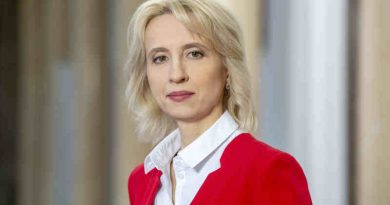Europe Releases 2024 Report on Efficiency and Quality of Justice

Europe Releases 2024 Report on Efficiency and Quality of Justice
The report highlights that the portion of the budget allocated to justice in the majority of European countries remains low compared with other public sectors.
Through a report, country profiles and an interactive database, the Council of Europe’s European Commission for the Efficiency of Justice (CEPEJ) identifies the main trends in the judicial systems of 44 European countries and two observer States.
Out of the 46 Council of Europe member States, only Liechtenstein and San Marino did not provide data. Israel and Morocco took part in the exercise as the observer States with the CEPEJ.
This tenth evaluation report since CEPEJ was established in 2002, the first measuring the impact of the Covid pandemic on judicial systems, provides policy makers and justice professionals with a practical and detailed tool for a better understanding of the functioning of justice in Europe to improve its efficiency and quality.
Released on October 16, the report highlights that the portion of the budget allocated to justice in the majority of European countries remains low compared with other public sectors, representing around 0.31% of GDP.
On average, each country spends €85.4 per inhabitant on its justice system (€7.31 more than in 2020). Wealthier countries generally allocate a higher budget to the justice system, sometimes exceeding €200 per inhabitant, while less wealthy countries devote a higher percentage of their GDP to justice, reflecting a greater effort in relation to their economic resources.
On average, 2/3 of their judicial system budget is spent on courts, 25% on the public prosecution services, and the remaining on legal aid (11%). Despite increases of 11.74% and 18.75% in court and public prosecutor budgets respectively, there has been a notable 16% decrease in spending on legal aid since 2020.
Wealthier countries (with a GDP per inhabitant of over €20,000) generally invest more in legal aid, with an average of 24% of the judicial budget allocated to legal aid, compared with just 3% in less wealthy countries.
Significant increases were observed across various budget areas, including training (+54%), which are in part a recovery from the significant declines in these areas in 2020 due to the Covid-19 pandemic.
[ Also Read: India Judicial Research Report 2024 Released ]
In 2022, Europe had an average of 22 judges, 12 public prosecutors and 180 lawyers per 100,000 inhabitants. However, there are major disparities between countries, particularly as regards judges, due to the specific national characteristics of judicial systems, the existence of lay judges (in 54% of member States and entities), the role of Rechtspfleger (in 35% of member States and entities), and the number and tasks of non-judge staff assisting judges.
There are more women judges and prosecutors than men in Europe (57% of professional judges and 54% of public prosecutors are women), and the percentage of newly recruited women judges is even higher than the existing proportion in 24 out of 32 countries (in 17 out of 27 countries for public prosecutors). However, the glass ceiling is still a reality, even if it seems to have begun to crack, with the proportion of women in the highest positions continuing to rise.
Between 2012 and 2022, the salaries of judges and public prosecutors as a proportion of average salaries increased slightly in Europe, although there were significant disparities, with some countries seeing decreases.
On average, the gross salary of judges is 2.5 times higher than the average national salary at the beginning of their career and 4.9 times higher at the end of their career. On the other hand, the gross salary of public prosecutors at the beginning of their career is on average 1.9 times the average national salary, with this ratio being 3.7 at Supreme Court level.
According to the report, 44 member States offer free online access to legal texts, case law from higher courts and various information on the judicial system through their courts’ websites.
Only in 3 member States access to court is free of charge. However, legal aid is available in all 46 participating states, although the conditions for obtaining it vary. In some countries, specific categories of people such as victims of domestic or sexual violence, immigrants or asylum seekers automatically benefit from this aid.
The downward trend in the number of courts in Europe was confirmed in 2022. At the same time, the existence of alternative dispute resolution mechanisms – court-related mediation exists in all member States – as well as digital solutions, is increasingly seen as a means of improving access to justice.
European judicial systems have shown a significant improvement in 2022 compared to 2020 data. While the theoretical time taken to process a case has decreased overall compared with 2020, the situation differs depending on the type of case (civil, criminal, administrative) and the level of jurisdiction (first, second, Supreme Court).
For example, while criminal cases have seen a reduction in processing times at first instance, civil and commercial cases have not yet returned to their pre-pandemic levels, with an increase in processing times at first and second instance. Third instance courts have been the most efficient for all types of cases. Court-related mediation remains underused in 25% of the states providing data.
Investment in Information and Communication Technologies (ICT) is constant and almost all states have increased their average ICT budget per inhabitant. This shows the growing importance of ICT for the judicial system. For the first time, a new experimental ICT Usage index accompanies the existing ICT Deployment index and provides a more comprehensive measure of the role of ICT in the judiciary.
ICT deployment and use vary significantly between states. It is interesting to note that some countries that scored the highest in the Deployment index have still somewhat lower Usage index which suggest recent development in ICT or inability to measure the usage at this point.
Since the last cycle and after Covid, many states and entities have made significant progress in introducing remote hearings in courts and in 33 states this is possible in criminal matters. In addition, new innovative tools to assist judges emerged during this evaluation cycle, signaling the start of significant developments that will be visible during the next evaluation cycle.
Courtesy: Council of Europe
💛 Support Independent Journalism
If you find RMN News useful, please consider supporting us.




